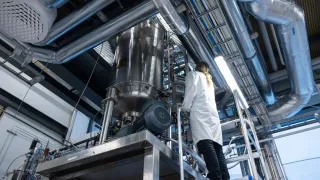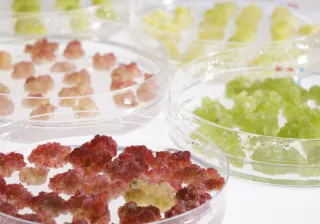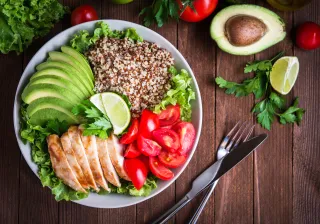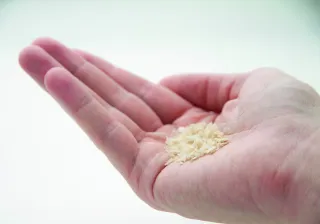VTT’s researchers are using filamentous fungi to build more effective cell factories for business use. Filamentous fungi can be used to produce animal proteins for medicinal and nutritional purposes without any animals or animal cells. The amino acid sequence of the desired protein is the only required source data.
VTT’s researchers have produced egg white protein without a chicken, milk protein without a cow, as well as novel biomaterials. The production host or cell factory they used is a filamentous fungus called Trichoderma reesei.
“After the reacquisition of patents related to our invention, we are even better positioned to use T. reesei to make therapeutic antibodies and other biopharmaceuticals. Our current methods really enhance the production of drugs,” says Jari Rautio, responsible for the sale of biotechnological solutions at VTT.
VTT contributes to piloting. Our largest production batches are 1,200 litres
In recent years, therapeutic antibodies have revolutionised the treatment of cancer and other diseases. However, these antibodies are rather slow and expensive to produce, since the production hosts are typically animal cells instead of fungal cells, such as T. reesei.
From producing a single enzyme to a versatile protein factory
T. reesei was first introduced at VTT more than 40 years ago. Back then, VTT was interested in its ability to produce cellulase enzymes. Cellulases are proteins that break down plant cellulose into sugars that the fungus can use as food.
“During the oil crisis of the 1970s, we wanted to find ways to obtain sugars from cellulose to produce ethanol and other biofuels”, says Markku Saloheimo, Senior Principal Scientist at VTT. Biofuel applications had to wait a few decades, but cellulase and hemicellulase enzymes were used to bleach cellulose, treat fabrics, and give jeans that ‘worn-out’ look.
Soon, T. reesei also produced other industrial enzymes that were and are still used for curdling cheese and making powerful detergents, for example. This was made possible by gene technology that VTT started using back in the 1980s. Recipes for industrially relevant enzymes replaced the genetic blueprint for cellulase enzymes in the fungus. Gene technology also helped multiply the levels of protein yield.
In addition to enzyme development, recent years have shifted the emphasis in protein production to new industrial sectors. Animal proteins produced by T. reesei have already been approved for nutritional use on the international consumer market.
“T. reesei can even be used to produce proteins not found in nature, such as several drug proteins and structural proteins used in new biomaterials,” says Principal Scientist Nina Aro from VTT.
Cost-effective production process for the customer
VTT’s researchers modify new strains of T. reesei to develop a cost-effective production host and production process for a certain protein. Typically, the protein is specified by the customer, but this is not always the case. For example, the fungal strain that produces egg white protein was a researcher-led initiative. Now this protein is produced by Onego Bio, a VTT spin-off.
The work on T. reesei is part of VTT’s biotechnology R&D team with more than a hundred employees. In addition to T. reesei, several other microbes are also used as production hosts, but they haven’t replaced T. reesei as the gold standard.
“Compared to other microbes, T. reesei is easily modified, uses an exceptionally large part of nutrients for protein production, and is able to utilize inexpensive raw materials for growth,” says Saloheimo.
According to Rautio, development in the entire biotechnology sector is in full swing despite the lack of pilot manufacturing capacity in Europe. Fungal strains and products must be approved by authorities and tested on the market before making investments in factories.
“VTT contributes to piloting. Our largest production batches are 1,200 litres,” says Rautio.









